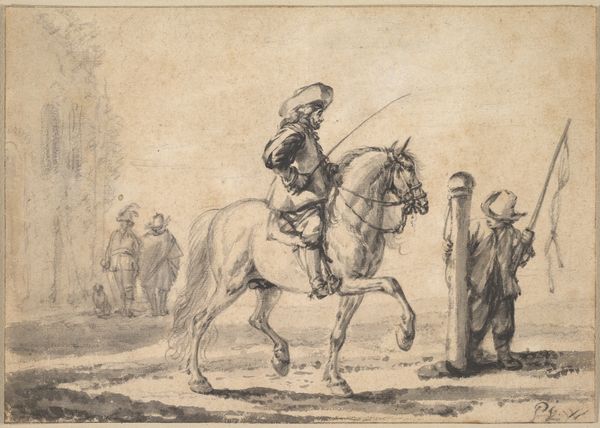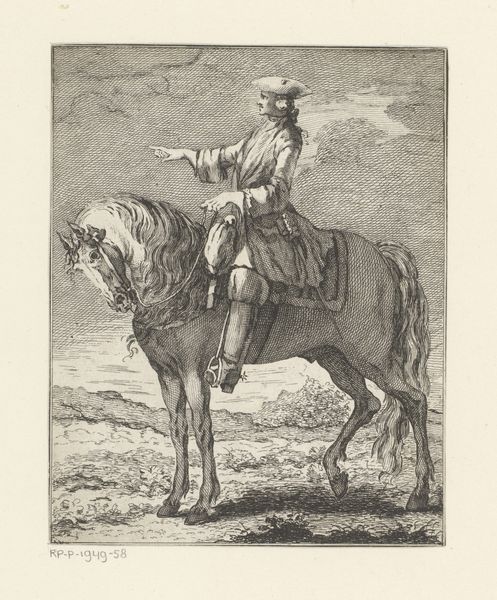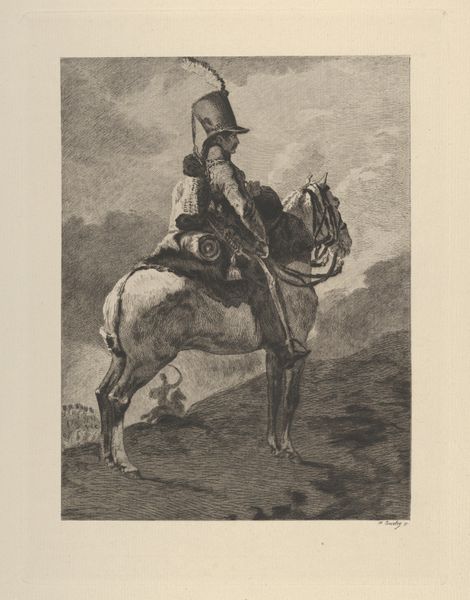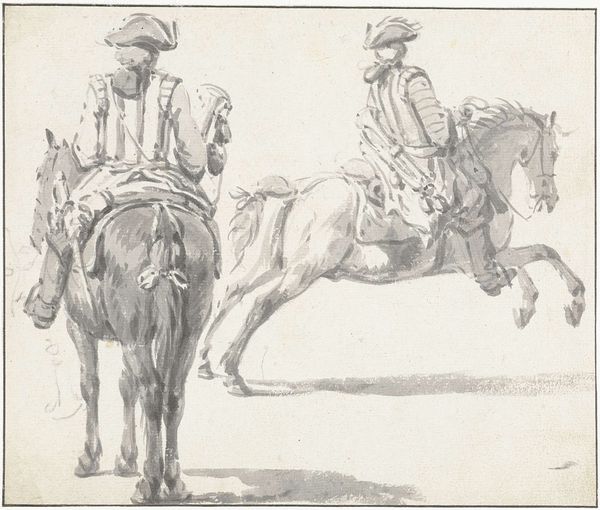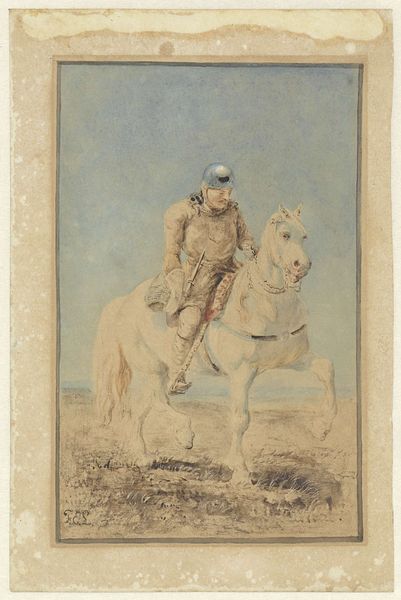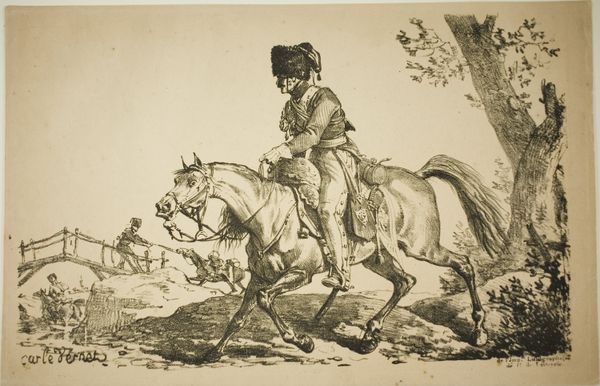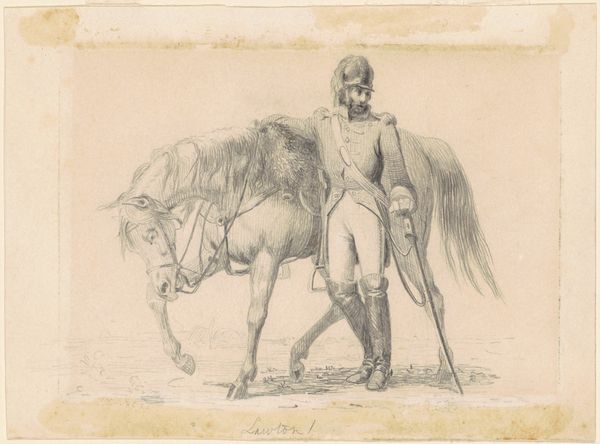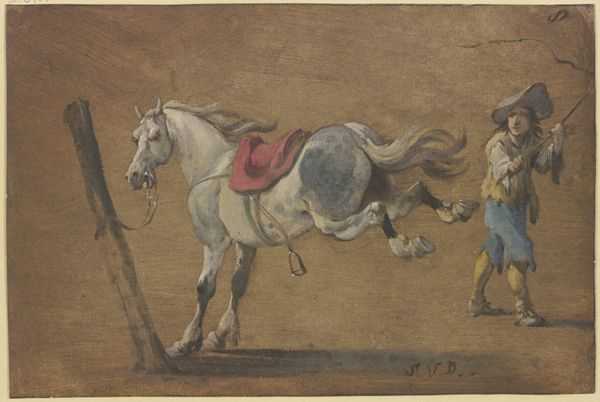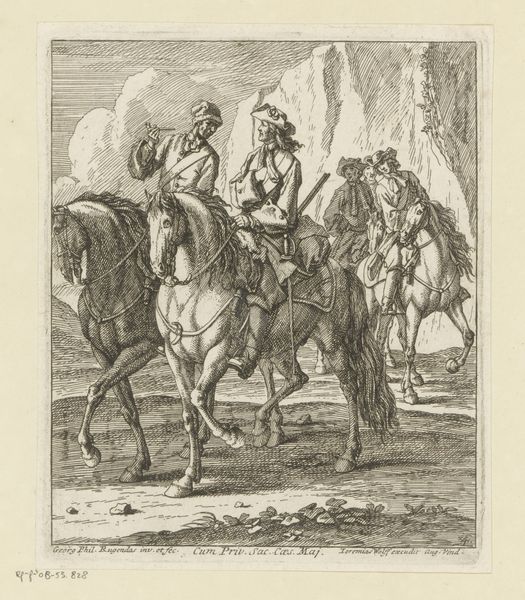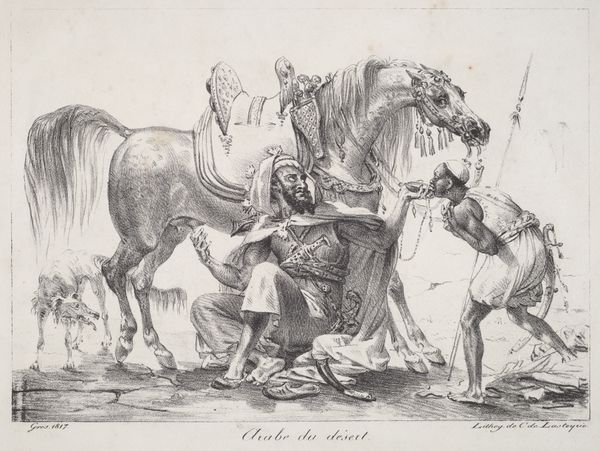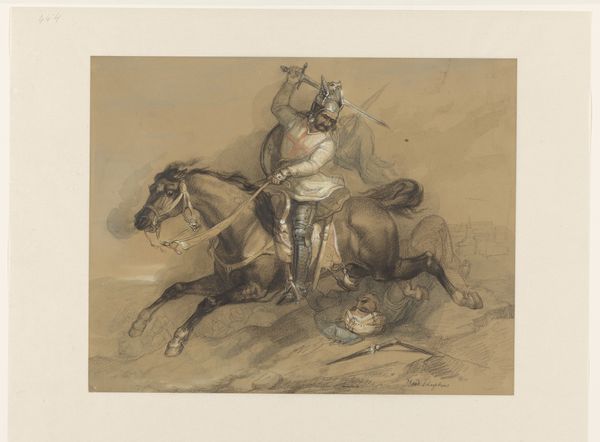
drawing, watercolor
#
portrait
#
drawing
#
landscape
#
figuration
#
watercolor
#
romanticism
#
orientalism
#
portrait drawing
#
genre-painting
Copyright: Public Domain: Artvee
Curator: Look at this drawing titled “Arab on Horseback,” made with watercolor around the 19th century by Horace Vernet. The subject, as the title indicates, is just that. It has this smoky palette, like an old photograph. Editor: Yes, that muted coloring immediately struck me too, contributing to a feeling of distant romanticism and perhaps a touch of idealized otherness. The steed is quite elegant and appears to be the main focal point, posed almost balletically. It is visually set above its rider in a kind of symbolic importance. Curator: I think you're on to something. The painting style is certainly aligned with Orientalism, a very potent theme in European art during that era. Images like these circulated widely, reinforcing colonial narratives but also fostering genuine fascination with the East. What symbols are discernible? Editor: The rearing horse is often connected to power and status. Vernet’s rendering captures the gracefulness and refinement associated with noble Arab steeds, aligning the rider, adorned in culturally specific attire, with an almost aristocratic representation. Curator: But consider also the Western gaze that permeates the work. While perhaps not intentionally malicious, this image contributes to constructing a certain vision of the Arab world, viewed from a safe distance, palatable for consumption by a European audience, perpetuating, therefore, social constructs, regardless of their intention. Editor: Indeed, the exotic details – the turban, the saddle, the horse’s ornate bridle – reinforce a sense of cultural spectacle, meant to both intrigue and perhaps subtly assert a sense of Western superiority through artistic possession. It's a dance of admiration and power. Curator: Right. Even the medium, watercolour, is significant. Its delicate and fluid nature contributes to a dreamy aesthetic, reinforcing that romantic vision rather than grounding it in reality. It’s fascinating to unpack those layers, even within this small artwork. Editor: Absolutely. Thinking about Vernet's composition in the wider setting of 19th-century France gives me a valuable perspective of these loaded depictions. It's been eye-opening, reconsidering such themes as historical commodities for national discourse. Curator: For me, it’s realizing the persistent presence and potency of culturally constructed symbols—their weight through history.
Comments
No comments
Be the first to comment and join the conversation on the ultimate creative platform.
